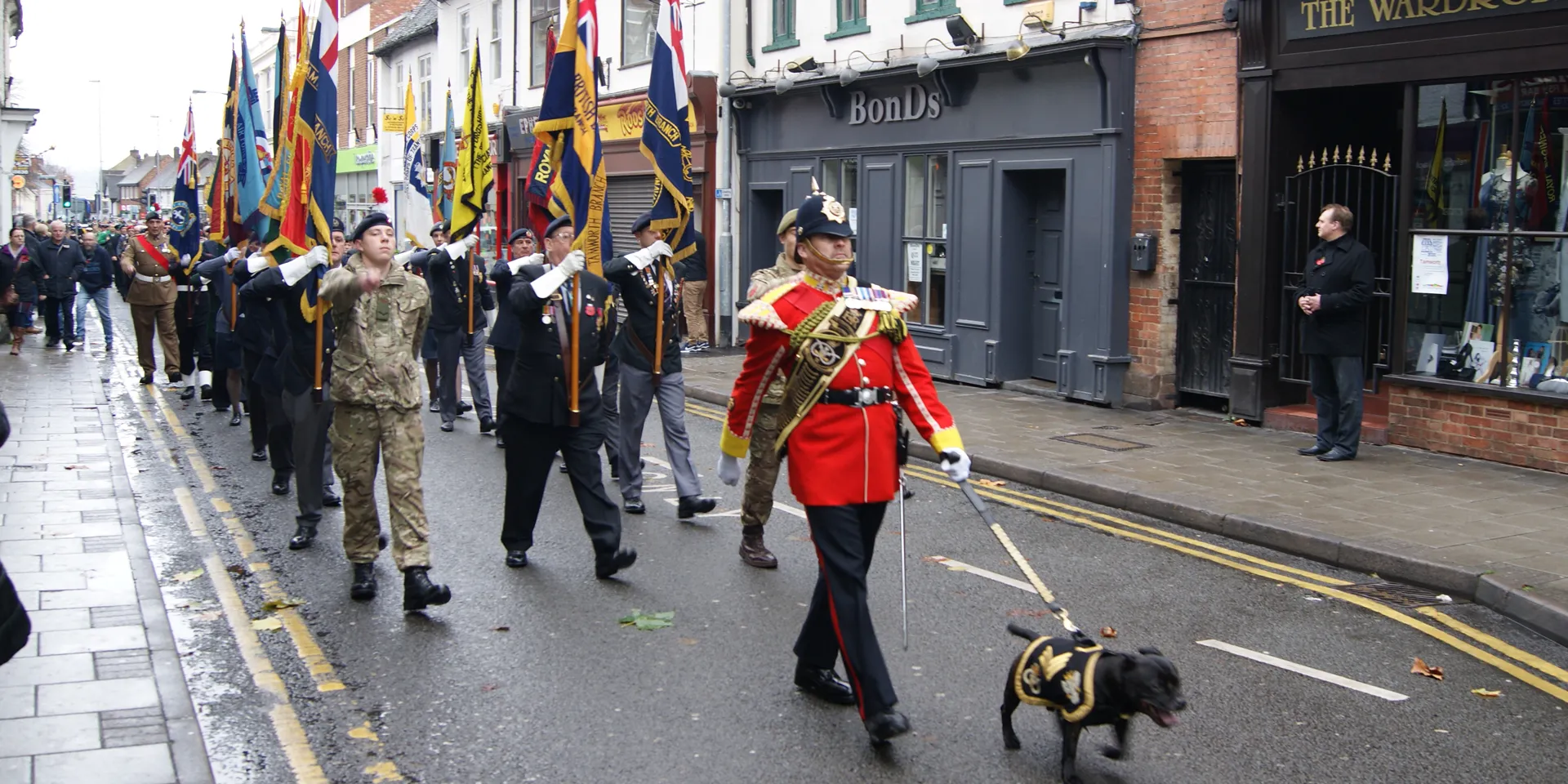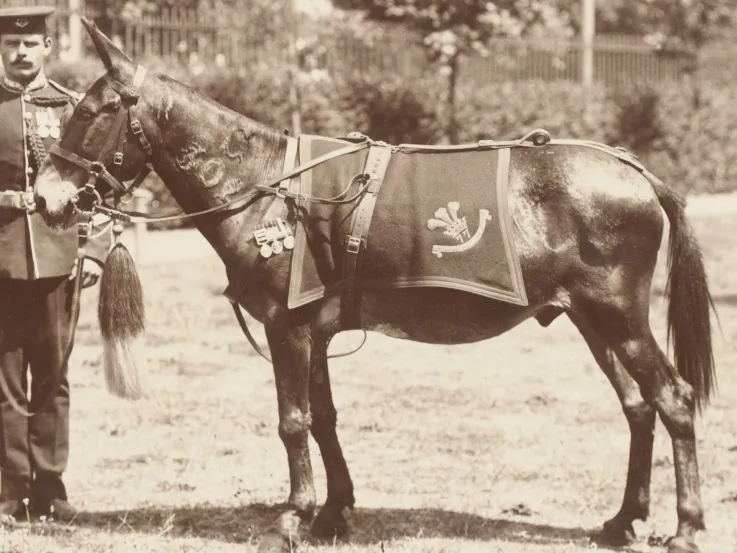What is a mascot?
Some units in the Army adopt military mascots. Maintained for ceremonial purposes, these are different to working animals, which serve in combat or transport roles.
The British Army has both official and unofficial mascots. Unofficial mascots are fed and housed at regimental expense or taken ‘on the strength’, while official mascots are entitled to the services of the Royal Army Veterinary Corps and looked after with public money. Official mascots also have a regimental number and rank. As with human soldiers, they can even be promoted and demoted!
Some of these mascots have connections to their regiment's home county. Others symbolise part of their unit's history.
Welsh billy goats
The practice of adopting mascots is very old. The Royal Welsh, and their predecessor units, have adopted goats as mascots since the 1770s.
This dates back to an incident at the Battle of Bunker Hill in 1775, during the American War of Independence. A wild goat is thought to have strayed onto the battlefield and led the Royal Welsh Fusiliers' colour party from the field. A goat has served with the regiment ever since.
In 1844, Queen Victoria presented the regiment with a Kashmir goat from her royal herd. Subsequently, the Royal Welsh have obtained all their goat mascots as a gift from the monarch. Technically, this means they're not really mascots at all, but ranking members of the regiment.
Billy Windsor
In 2006, Lance Corporal William ‘Billy’ Windsor - the mascot of 1st Battalion, The Royal Welsh - was demoted.
While leading a parade in front of Queen Elizabeth II, he marched out of line and tried to head-butt the battalion drummers. His demotion to the rank of fusilier meant that other soldiers were no longer expected to salute him.
Billy eventually regained his old rank and retired with full honours to Whipsnade Zoo in 2009. Soldiers from the battalion lined the route from his pen to the trailer as he left their camp for the last time.
Despite his misdemeanours, Billy was honoured as he symbolised the traditions of the regiment and was a cornerstone of its character.
Key fact #1
There are other perks to being a Royal Welsh mascot. Billy Windsor was given two cigarettes a day to eat, and Guinness to drink!
Indian tiger
Plassey was a Bengal tiger who belonged to the 102nd Regiment of Foot (Royal Madras Fusiliers) in the 1800s. He was named Plassey after the famous battle of 1757, which the 102nd's predecessor unit had taken part in.
In 1870, when the 102nd were shipped to England, Plassey came with them. He travelled in the company of two leopards and lived, unchained, at the regimental base in Dover.
After frightening the local people once too often, he was reluctantly given a new home at London Zoo. He died there in 1877.
Key fact #2
A tiger is depicted on the cap badge of the Royal Dublin Fusiliers, the 102nd Foot's successor unit. This is a symbol of strength, grace and power in Indian culture.

Watchman taking part in a Remembrance Day ceremony in Tamworth, 2015
Staffordshire terrier
Since the 19th century, Staffordshire regiments have had an association with their local dog, the Staffordshire Bull Terrier.
In 1882, during the Egyptian War, the South Staffordshire Regiment were departing Cairo accompanied by their bull terrier, named Boxer. As their train began to move, Boxer got scared and leapt onto the tracks where he was seen lying unconscious, presumed dead.
It was not until the regiment arrived in Assiut a few days later that the soldiers noticed they had been followed by a dog. It was, of course, Boxer who had run 200 miles across the desert to reunite with his unit!
But the Staffordshires did not adopt a regimental mascot until 1949, when 6th Battalion The North Staffordshire Regiment was presented with a white 'Staffy'.
Key fact #3
The current Staffordshire Bull Terrier is an unofficial mascot. His upkeep is paid for by the Staffordshire Regimental Association.
Watchmen
Since 1949, the various iterations of the Staffordshire Regiment have had a Staffordshire Bull Terrier named Watchman as their mascot. So far, six dogs have held the honour. All have marched proudly in regimental parades and taken part in ceremonial events.
Watchman IV, who retired in 2010, had a particularly prestigious career. He got to meet Queen Elizabeth II at a remembrance service at Westminster Abbey, where his good behaviour earned him the rank of colour sergeant, the same as his handler.












